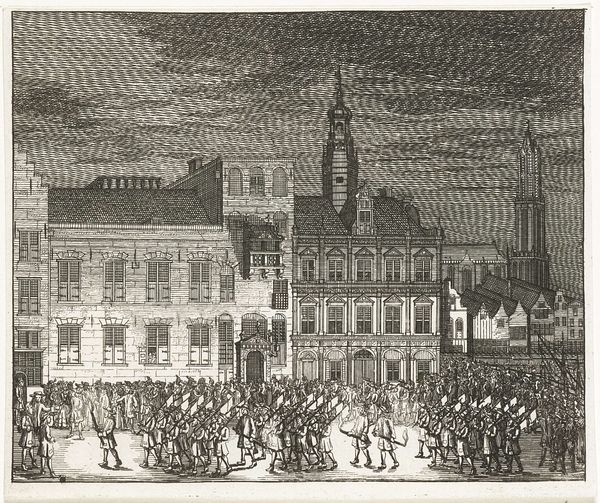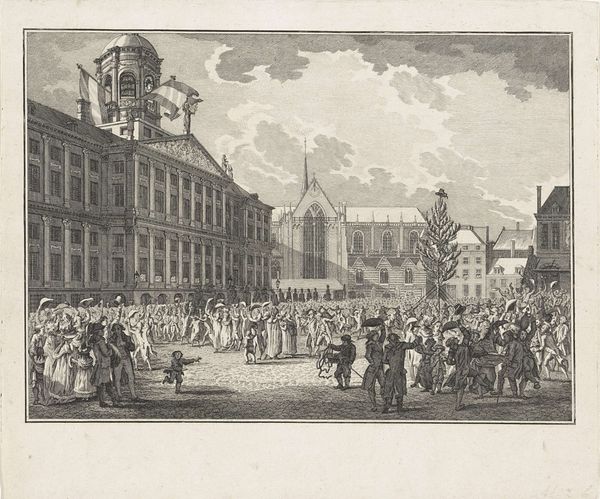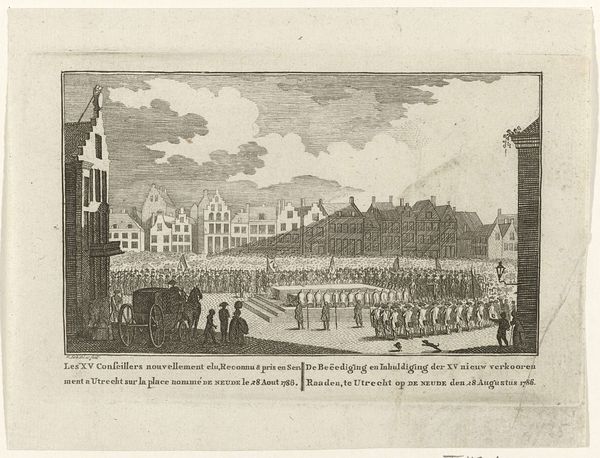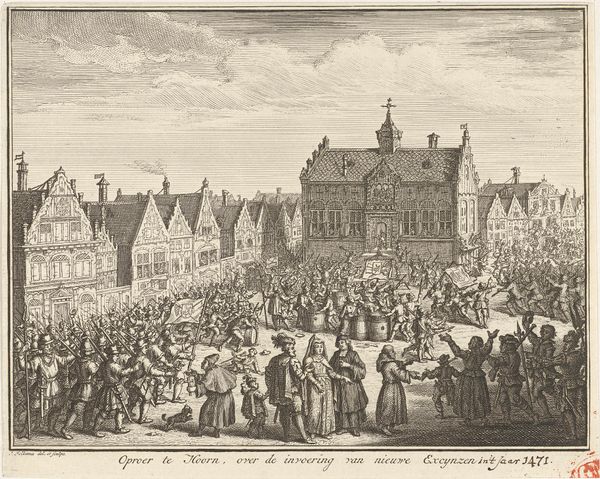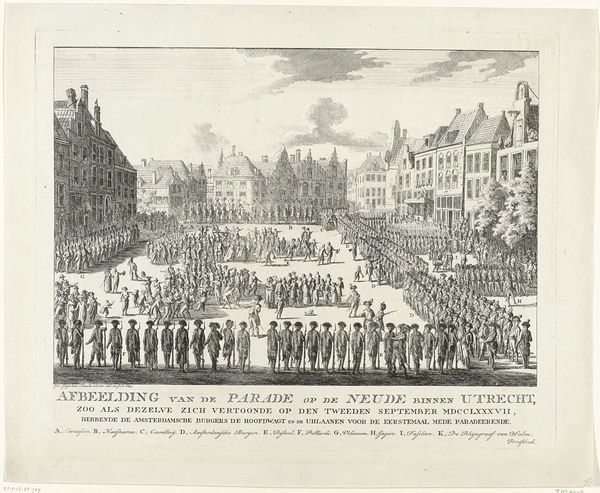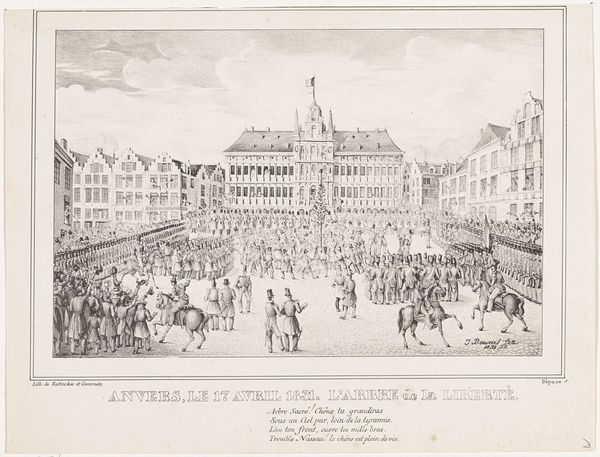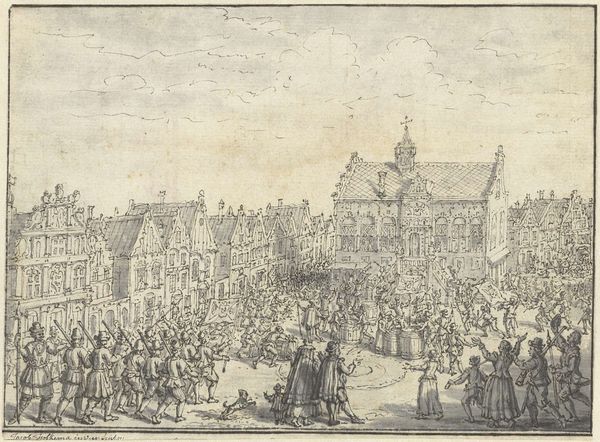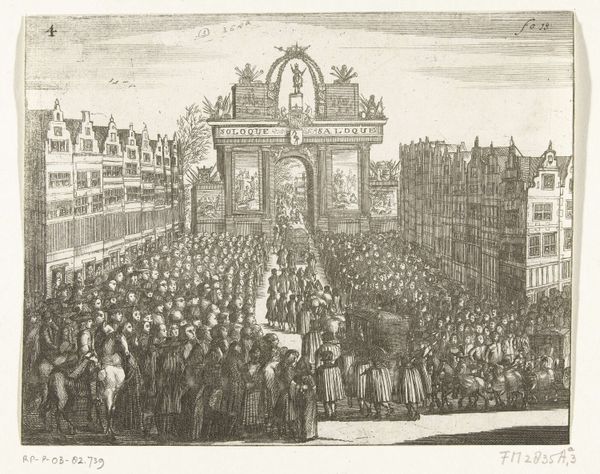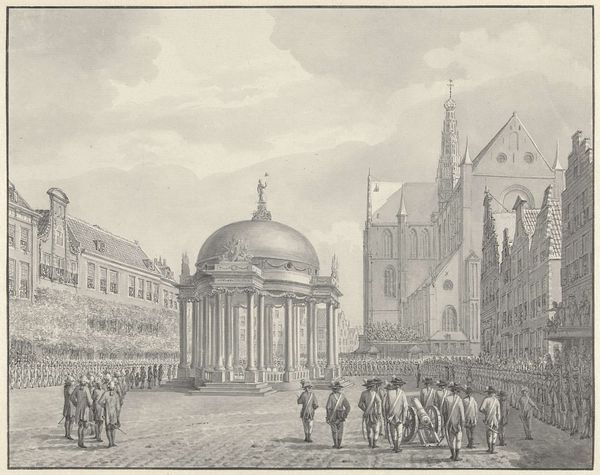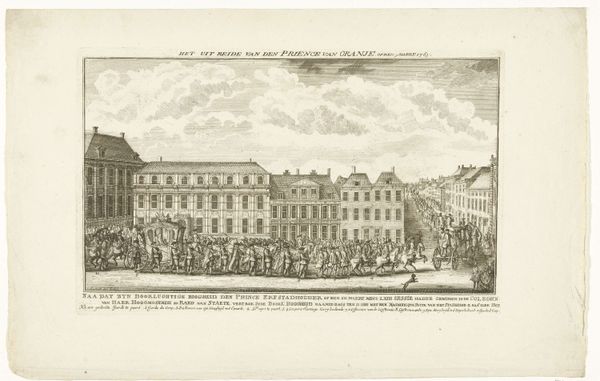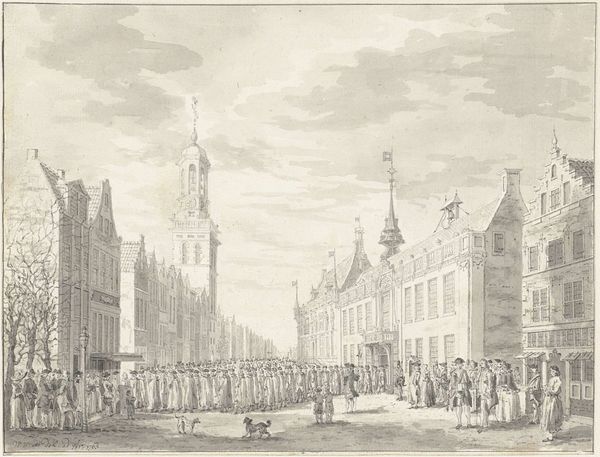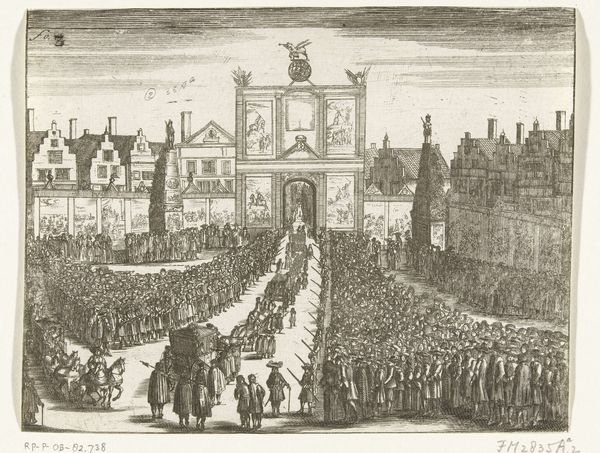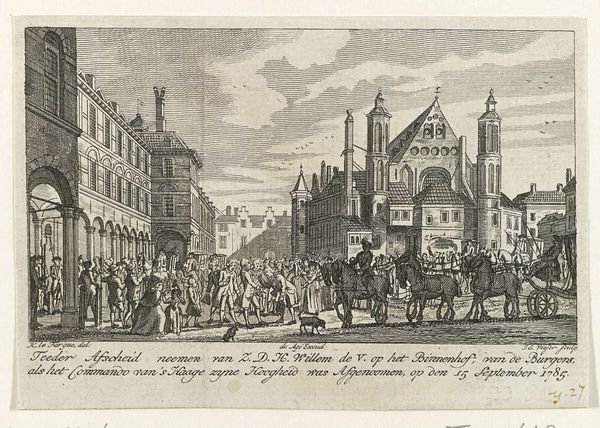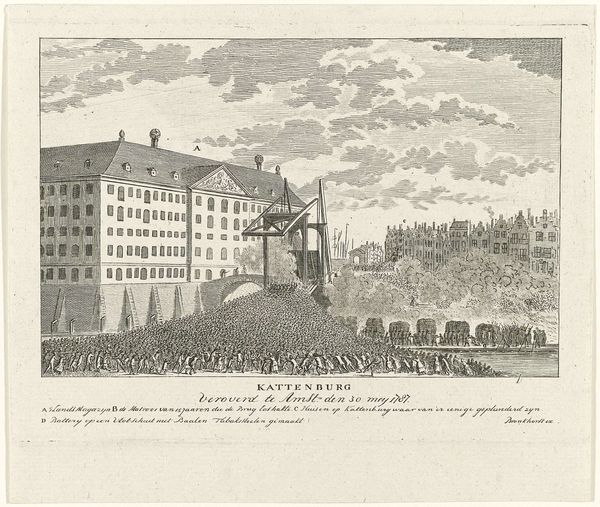
Beëdiging van het Regeringsreglement op de Grote Markt te Haarlem, 5 september 1787 1787
0:00
0:00
print, engraving
#
neoclassicism
# print
#
old engraving style
#
15_18th-century
#
cityscape
#
history-painting
#
engraving
Dimensions: height 266 mm, width 340 mm
Copyright: Rijks Museum: Open Domain
Curator: Here we have Vincent Jansz. van der Vinne's engraving, "Beëdiging van het Regeringsreglement op de Grote Markt te Haarlem, 5 september 1787," created in 1787. Editor: My first thought is how eerily calm this busy scene feels. The muted grays create a somber tone. Curator: Indeed. Note the precise linework typical of neoclassical prints. Van der Vinne meticulously renders the architectural details and the crowd gathered in the Grote Markt. Editor: But who are these neatly arranged people, and why are they here? It speaks of control and order, yet feels on the precipice of something more. Curator: This engraving documents a pivotal historical moment, the swearing-in of the new government regulations in Haarlem. The regulations shifted power, marking a significant moment in Dutch political history. The print illustrates the ceremony with that grand pavilion at its center, symbolizing power and governance. Editor: Exactly! That's where it becomes interesting. These are not just neutral citizens observing; their rigid formation underscores the imposition of order, erasing individual narratives in favor of collective compliance. The etching reveals tensions between liberty and control, citizen and state. The limited palette suggests a silencing. Curator: Yet, the architectural structures give the piece a strong sense of balance. Look how the horizontal lines of the buildings are contrasted by the vertical columns, which offer visual interest but maintain the scene's rigid composition. It's all very deliberately constructed. Editor: And consider the historical implications. Whose stories are left out? Whose voices were not represented in this so-called "governing" structure? This engraving unintentionally asks us to question power and representation. Curator: A fine reading. The engraving style focuses attention on formal order and idealized civic action, downplaying dissension or ambiguity. The artist presents what the government hoped to project at this moment. Editor: Well, the strength of such art lies in exposing those tensions – the unspoken undercurrents beneath the formal surface, which offers much insight into the power structures of that time. Curator: An astute reminder to always consider the work and the conditions that fostered it. Editor: Yes, because ultimately, that’s where art history gets interesting, in deciphering the dialogues across time and perspectives.
Comments
No comments
Be the first to comment and join the conversation on the ultimate creative platform.
